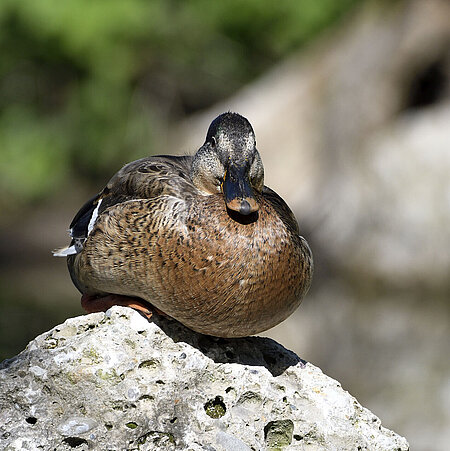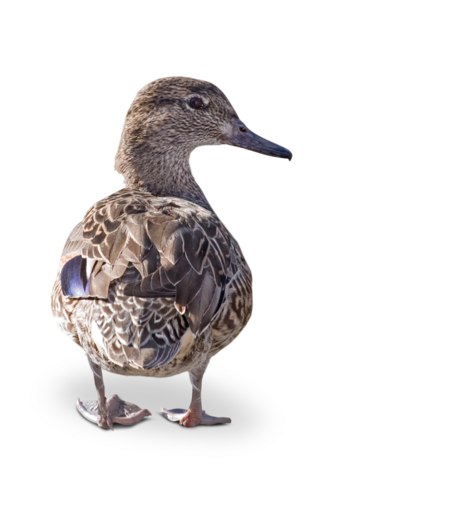Sickle Duck
Anas falcata

- FamilyAnatidae (Ducks, geese and swans)
- Weight430 – 770 g
- HabitatPonds, lakes, rivers and marshes
Magnificent males
During the breeding season, male sickle ducks have a conspicuous plumage. They have a shiny copper-green hood and very elongated, sickle-shaped shoulder feathers. Sickle ducks prefer to breed on freshwater surfaces in wooded areas. Outside the breeding season, they can also be found in lagoons or shallow saltwater bays.

Relationships
At the beginning of the breeding season, couples find each other via complex courtship rituals. The female lays 6-9 clay-colored eggs in a nest on the ground. The hatching of the eggs and the rearing of the chicks is the sole responsibility of the mother. The male remains near the nest for some time before it retreats to moult.